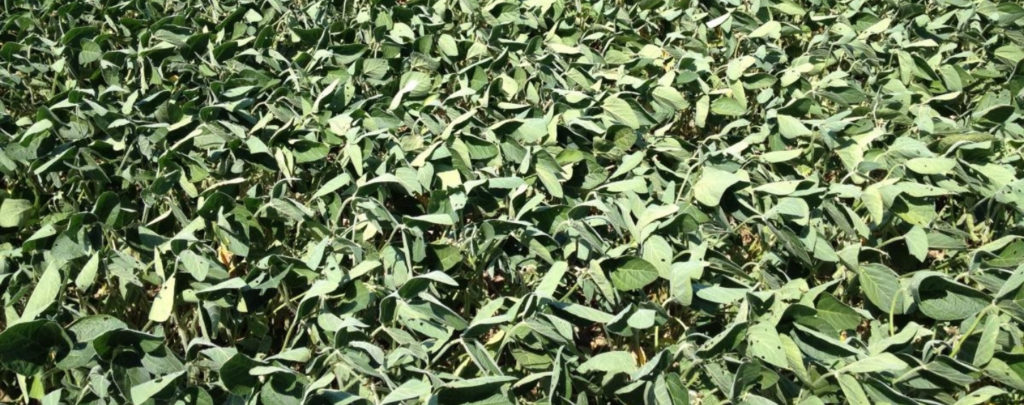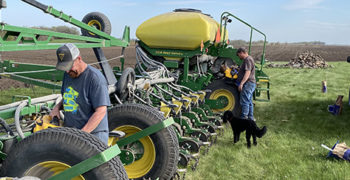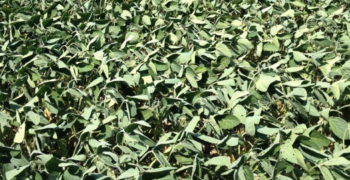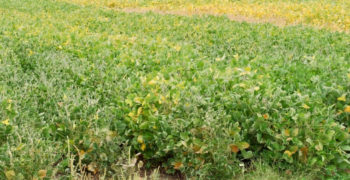Background
Soybean drought stress is usually not as severe as it is in corn. Water is essential to the growth of soybean plants. Evapotranspiration (ET) is the combination of soil water evaporation and plant used water from transpiration. This is how plants use water. Soybeans use the most water when rapid growth is occurring. They need the most water from the early pod set stage to the mid seed fill stages.When drought conditions are present it is likely the plant will take a yield loss. When the plant needs more water than the soil and air are allowing it cannot take up nutrients, move them, and make them available as easily. Plants in a drought stress situation are also more susceptible to insect or disease damage due to lower plant integrity and strength.
Symptoms
- Leaf flipping
- Leaves will flip over to show underside to try to reflect more light
- Leaf clamping
- Leaves will fold in to conserve water and reduce photosynthesis
- Reduced bloom period
- Limited vegatiative growth
Management
In a drought stress situation management can vary from field to field. Each field has its own individual characteristics. These include variety planted, soil type and moisture, tillage, water supply, and overall management. Some preventative measures you can take to avoid drought stress include selecting for drought tolerant varieties and doing soil tests of your fields. These practices allow you to make a better decision on when, where and what to plant to avoid future drought stress. If you find yourself in a drought stress situation there are some ways to help save your yield. The obvious practice is somehow getting water to your crops. This can be done through a variety of irrigation methods. These are usually something that needs to be installed beforehand though. Certain tillage practices also help reduce soil moisture loss. These vary depending on soil type and texture. Another possible strategy depending on plant maturity and yield potential is using the crop for feed rather than grain. Depending on the stage of soybeans the best management decision is usually to wait for moisture.
Sources
Influence of Drought on Corn and Soybean
Drought Stress Symptoms in Soybean



